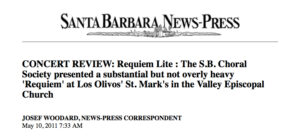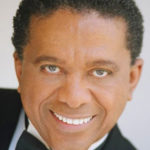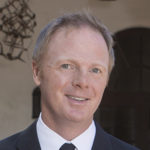
Fauré Requiem May 2010

For anyone questioning the logic or sensitivity factor in programming a Requiem as the main event of a Sunday afternoon “Mother’s Day” choral concert, consider the primary caveat: Gabriel Fauré’s “Requiem” is a decidedly lighter model of the form. As heard in a solid, moving performance by the Santa Barbara Choral Society, Sunday at Los Olivos’ St. Mark’s in the Valley Episcopal Church, this piece came off as virtually a feelgood Requiem, comparatively speaking.Mothers and their offspring had nothing to fear here.
This is not to say the work, one of Fauré’s best-known pieces, isn’t without its proper substance, moments of gravity, musical challenges or higher calling. But Fauré intentionally set out to create a more celebratory Requiem, removed from the foreboding forces of famed examples of the form by Verdi and Mozart. His seven-part Requiem is shorter than most, clocking in at around a half-an-hour. It isn’t without reverential seriousness or counterweighted aspects of both light and dark, but the sum effect inspires a more affirmative emotional effect.
Sunday’s performance was, in fact, a slightly shorter version of the program presented at Hahn Hall in April, and another in a hopefully continuing tradition of performing in this wonderfully accommodating space for classical music. This was also a warm-up for, as well as a preview for, the Choral Society’s upcoming Spain tour next month. The ensemble, led boldly and clearly by director Jo Anne Wasserman, with sturdy organ support by David Potter, made a formidable yet friendly impression.
Whereas other large-scale choral works celebrate the gathered sonic masses of the medium, Fauré’s composition deftly juggles densities and the diversity of high and low, and male and female voices over the course of its parts. Male and female singers intersperse fairly democratically in the Offertory, while the Sanctus reaches a stirring but fleeting crescendo, before the high, sweet and ethereal feminine voices of the Pie Jesus.
This requiem’s Agnus Dei takes some meandering, conspicuously French-flavored harmonic detours, far from the land of Verdi, but veers back to the founded sternness of being in the “Requiem aeternum” statement. That segues naturally into the “day of reckoning” character of the Libera me section, with a calm, prayerful resolution in the final “In paradisum.” In this reading, the Choral Society navigated the mercurial road map of the work and its mood swings with an impressive power and flexibility.
Sampling from the other material prepared for next month’s tour, the group offered up several relevant snippets, cutting across history and cultures. Mozart’s “Ave Verum Corpus” made for a smooth connector between the Requiem and the sampler plate of small pieces, moving from Spanish renaissance composer Tomas Luis de Victoria’s “Ave Maria” to Aaron Copland’s inventively re-harmonized and personalized version of the hymn “By the River,” another case of religious music both dark and light.
From a different sacred music corner, the group gave collective voice to the spiritual, “There is a Balm in Gillead,” arranged by William Dawson and featuring the sensitive singer Brian Lane as soloist, and Marta Keen’s “Homeward Bound” represented the unruffled contemporary melodic choral cause. That tune, fittingly, is planned as the last piece in the forthcoming tour’s last concert, in the gothic Barcelona Cathedral.
All in all, the Choral Society’s performance on Sunday found the group to be in fine fettle and fully roadworthy form.

 American baritone, Ralph Cato has travelled the world extensively, telling stories in song with his warm, clarion baritone voice.
American baritone, Ralph Cato has travelled the world extensively, telling stories in song with his warm, clarion baritone voice. Tenor, Benjamin Brecher has performed over fifty operatic roles with many of the world’s most prestigious opera companies, specializing in the high lying lyric tenor repertoire. He has performed 16 roles with New York City Opera alone. Career highlights include performances with Opera Orchestra of New York, L’Opera de Nice, Rossini Opera Festival in Pesaro, L’Opera de Montreal, Santa Fe Opera, Opera Theatre of St. Louis, among many others. His orchestral solo repertoire includes Mozart, Handel, Orff, Bach, Haydn, as well as many performances of Britten. In 2000 he began performing the great Irish Tenor songs in a concert produced for him entitled A Celtic Celebration, Twenty years later, the show has become a North American hit with performances with 45 Symphonies in North America. Ben continues his discography having added his twelfth recording in 2016 Forgotten Liszt, with pianist Robert Koenig, and will record a new release in 2022 entitled “Three Centuries of Thomas Moore” including the music of Britten, Berlioz, and Sarah Gibson on MSR Classics. He is a Professor of Voice at University of California Santa Barbara, where he has served as the Head of Voice.
Tenor, Benjamin Brecher has performed over fifty operatic roles with many of the world’s most prestigious opera companies, specializing in the high lying lyric tenor repertoire. He has performed 16 roles with New York City Opera alone. Career highlights include performances with Opera Orchestra of New York, L’Opera de Nice, Rossini Opera Festival in Pesaro, L’Opera de Montreal, Santa Fe Opera, Opera Theatre of St. Louis, among many others. His orchestral solo repertoire includes Mozart, Handel, Orff, Bach, Haydn, as well as many performances of Britten. In 2000 he began performing the great Irish Tenor songs in a concert produced for him entitled A Celtic Celebration, Twenty years later, the show has become a North American hit with performances with 45 Symphonies in North America. Ben continues his discography having added his twelfth recording in 2016 Forgotten Liszt, with pianist Robert Koenig, and will record a new release in 2022 entitled “Three Centuries of Thomas Moore” including the music of Britten, Berlioz, and Sarah Gibson on MSR Classics. He is a Professor of Voice at University of California Santa Barbara, where he has served as the Head of Voice. Born and raised in Southern California, April Amante is a versatile soprano with expertise and facility in repertoire spanning from early music to contemporary musical theater.
Born and raised in Southern California, April Amante is a versatile soprano with expertise and facility in repertoire spanning from early music to contemporary musical theater. Tracy Van Fleet is pleased to return to the Santa Barbara Choral Society. As a soloist, she has performed with the Los Angeles Master Chorale, Lüneburg Symphony in Germany, Orquesta Filarmónica de Boca del Río in Mexico, Pasadena Symphony, Naples Philharmonic, Los Angeles Bach Festival, San Diego Chamber Orchestra, Colorado Philharmonic, USC Symphony and Chorus, and others. She has had many appearances with the Los Angeles Opera, Los Angeles Philharmonic, Pacific Symphony, Hollywood Bowl Orchestra, Opera Pacific, San Diego Opera and Opera Colorado.
Tracy Van Fleet is pleased to return to the Santa Barbara Choral Society. As a soloist, she has performed with the Los Angeles Master Chorale, Lüneburg Symphony in Germany, Orquesta Filarmónica de Boca del Río in Mexico, Pasadena Symphony, Naples Philharmonic, Los Angeles Bach Festival, San Diego Chamber Orchestra, Colorado Philharmonic, USC Symphony and Chorus, and others. She has had many appearances with the Los Angeles Opera, Los Angeles Philharmonic, Pacific Symphony, Hollywood Bowl Orchestra, Opera Pacific, San Diego Opera and Opera Colorado.